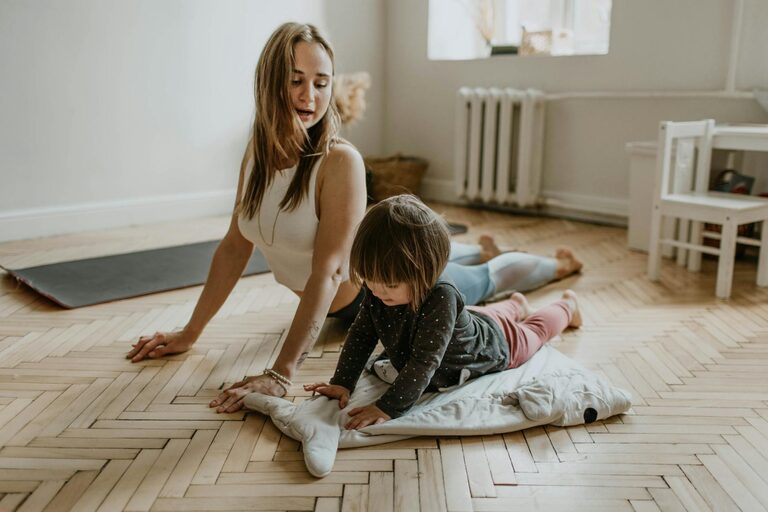
A Beginner’s Guide to Stretching at Home for Better Flexibility
Stretching is a simple and accessible way to improve your flexibility, increase circulation, and reduce muscle tension without the need for special equipment or a gym membership. Whether you’re new to exercise or looking to add some gentle movement to your daily routine, stretching at home can offer numerous benefits for both body and mind. This beginner’s guide will walk you through the basics of stretching, best practices, and easy routines you can start today.
Why Stretching Matters
Stretching helps keep your muscles flexible, strong, and healthy. When you regularly stretch, you maintain a good range of motion in your joints, which supports better posture and reduces the risk of injury. Stretching also encourages blood flow, which can speed up recovery and reduce soreness after physical activity.
Additionally, taking time to stretch can be a calming ritual that reduces stress and promotes relaxation. Many people find that stretching fits well into morning routines or as a way to unwind before bed.
Types of Stretching
There are several different types of stretching, but as a beginner, you’ll mostly want to focus on two main kinds:
Static Stretching
This involves holding a stretch position for 15 to 60 seconds. It is ideal for improving overall flexibility and is best performed when your muscles are warm. Examples include hamstring stretches, calf stretches, and shoulder stretches.
Dynamic Stretching
Dynamic stretches involve moving parts of your body through a full range of motion in a controlled manner. These are great for warming up before exercise as they increase blood flow and muscle temperature. Examples include leg swings, arm circles, and torso twists.
Getting Started: Warm Up First
Before you start stretching, it’s important to warm up your muscles. This could be a 5-minute brisk walk around your home or some light marching in place. Warming up helps prevent injury and makes your muscles more pliable.
Basic Stretching Routine for Beginners
Here is a simple full-body stretching routine you can do at home. Hold each stretch gently without bouncing, and breathe deeply throughout.
1. Neck Stretch
– Sit or stand with your back straight.
– Slowly tilt your head toward your right shoulder until you feel a gentle stretch on the left side of your neck.
– Hold for 20 seconds, then switch sides.
2. Shoulder Stretch
– Bring your right arm across your chest.
– Use your left hand to press your right arm closer to your chest, feeling a stretch across the shoulder.
– Hold for 20 seconds, then switch arms.
3. Chest Opener
– Clasp your hands behind your back and straighten your arms.
– Gently lift your chest, squeezing shoulder blades together.
– Hold for 20-30 seconds.
4. Cat-Cow Stretch (for spine mobility)
– Start on all fours with wrists under shoulders and knees under hips.
– Inhale, arch your back and lift your head and tailbone (Cow).
– Exhale, round your back, tuck your chin, and pull your belly button toward your spine (Cat).
– Repeat 5 times slowly.
5. Hamstring Stretch
– Sit on the floor with your right leg extended and left leg bent with the sole against your inner thigh.
– Reach towards your right toes, keeping your back straight.
– Hold for 20-30 seconds, then switch legs.
6. Quadriceps Stretch
– Stand and hold onto a chair for balance.
– Grab your right ankle behind you, pulling your heel toward your buttocks.
– Keep knees close together.
– Hold for 20 seconds, then switch legs.
7. Calf Stretch
– Stand facing a wall with your hands against it.
– Step your right foot back, keep it flat on the floor and bend your left knee forward.
– Feel the stretch in your right calf.
– Hold for 20-30 seconds, then switch legs.
Tips for Safe and Effective Stretching
– Listen to your body: Stretch to the point of mild tension, never pain.
– Consistency is key: Aim to stretch at least 3-4 times per week for best results.
– Breathe deeply: Breathing helps muscles relax and improves oxygen flow.
– Don’t rush: Hold stretches steadily and avoid bouncing motions.
– Stay hydrated: Drinking water helps muscle flexibility and recovery.
When to Stretch
Stretching can be incorporated at different times depending on your goals:
– Morning: Helps reduce stiffness and energize you for the day.
– Before exercise: Use dynamic stretching to prepare muscles and joints.
– After exercise: Static stretching aids flexibility and recovery.
– Evening: Stretching before bed can ease tension and improve sleep quality.
Additional Benefits of Stretching
Besides physical improvements, stretching promotes mindfulness by encouraging you to focus on your body and breath. This can reduce stress and promote a sense of well-being. Over time, regular stretching improves your posture and movement efficiency, which can enhance everyday activities and prevent discomfort.
Final Thoughts
Starting a stretching routine at home is a wonderful, low-cost way to care for your body. You don’t need fancy equipment or a lot of space—just a few minutes each day can bring meaningful benefits. Remember to warm up, move gently, and stay consistent. With patience, you’ll notice improved flexibility, less muscle tightness, and a happier, more comfortable body.
Give this beginner’s guide a try, and enjoy the simple joy of stretching!
